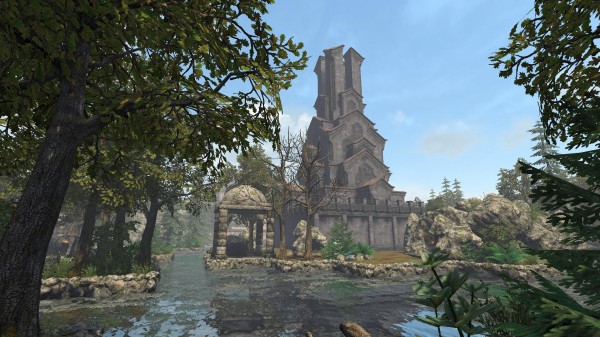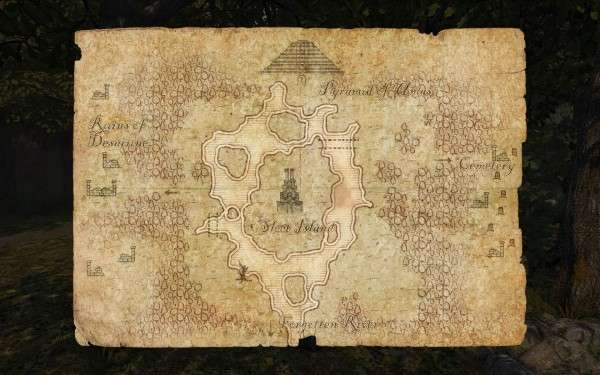
Legend of Grimrock 2 PC Review
Legend of Grimrock was a surprisingly enjoyable game. Surprising, because while many genre callbacks settle for less, Grimrock not only emulated the style and successfully captured the appeal of dungeon crawlers like Dungeon Master and Eye of The Beholder, it also layered on unique systems borne from a modern mindset, making for a fuller game than you’d assume. At its core sat a very plainly articulated task of getting through to the end, of escaping the prison setting of mount Grimrock – a challenge that saw you working your way, floor by floor, to the bottom and to your freedom.
Legend of Grimrock 2 ventures to break up that linearity and offer more options in terms of what to tackle next. It largely succeeds at that, and gains variety and a greater sense of exploration, but loses something in the process as well. What was once a very clear objective is muddied somewhat in the transition, and where every obstacle used to block your path to an always tangible goal, Grimrock 2 can sometimes feel aimless in contrast.

Instead of being plopped down at the top of a mountain prison, you’re washed ashore the island of Grimrock at the beginning of this game. Starting out on the beach, you begin by gathering food and collecting the most rudimentary of weapons. Early enemies are more of the roaming wild life variety, but as you progress and start uncovering the hidden secrets of the island, enemies become more mystical and malicious. It’s simultaneously daunting and intriguing, and the beginning of the game does a great job of establishing a true sense of adventure and discovery.
The new game map consists of multiple areas which eventually lay open to be explored, to an extent, in the order of your choosing. Puzzles usually gate off one area from the next, and should you hit a snag, the game invites you to engage with a different task in its stead. The areas are represented by different environments, adding visual variety to the game that is very welcome. There’s a forest, a swamp, a beach and a cemetery, among others. The engine struggles a little bit with the open areas, and they never look quite as good as the harsh stone walls and ominous shadows of the interiors, but it’s enough to achieve the desired result of changing things up.

It has to be said, however, that atmosphere and different visuals is basically what it amounts to. The mechanical trappings remain the same wherever you go. There is no town where you’re safe and can rest and re-stock on items, so coming back up to the surface doesn’t offer the sense of relief that you’d imagine. There are no shops here – no taverns or even other people to lend you a sense of safety or respite from constant peril. Whether you are deep in a literal dungeon or roaming the grassy areas above, it makes little difference – at the end of the day Grimrock 2‘s world is still one big dungeon, it’s just non-linear and dressed up differently.
In order to have a clear goal while keeping the structure of the game as open as possible, you are soon introduced to the game’s main task of seeking out power gems that need to be collected and then forged into one of four elements. The elements are then to be used to open the gate to the final area of the game. These power gems are strewn around the island, and finding them is essentially the obligatory late-game fetch quest everyone frowns on in a Zelda, but here it makes up the game’s central conceit — quite significantly less enticing than the simple promise of freedom, then.
But let’s put things into perspective and remind ourselves that what you engage in on the hunt for these power gems is a truly good game. Back is Grimrock‘s seamless mix of puzzles, combat, exploration and RPG elements. You can still fully customise your party at the outset, assembling a collection of races and classes of your choice and giving them names – even letting you provide your own portraits for the party members. In fact, the premise of the game barely dictates what era it’s set in, and your party is never explicitly shown in a cutscene nor represented in the game by anything but your character portraits. The weapons, armor and various items are all acquired by your party once on the island, as they arrive completely empty handed.


Basically, if you want to dream up and draw a gang of contemporary people and imagine that they ended up in this game, the game itself never contradicts that. Maybe it’s an unlikely group of movie stars that have to team up to survive, and you grab your portraits on IMDB? Go for it.
The game has been expanded with more character classes and options, but mechanically it remains largely the same. You still move in a grid pattern, one square at a time. Your party and enemies take up a full square. You manage the individual inventories of your four party members, as well as keep track of their status and hunger metres. The combat happens in real time, and you have to mind your energy metres and the cool down times for various weapons and actions. Being surrounded or backed into a corner is absolutely devastating, so positioning is among the most pivotal aspects of staying alive. In Legend of Grimrock, circling enemies was often a sure-fire way to beat even the mightiest foe, but here enemies do a better job of fending you off. It’s still hugely reliant on enemy numbers and geography to up the challenge, however.

Just like its predecessor, there is a deliberate obtuseness to Legend of Grimrock 2 and its secrets that I find admirably cheeky, and the puzzle design is even sharper and more devious than before. So much so that I’m sure some players will find them too hard, but in puzzle design there are always a handful of too hards when you’re going for just rights.
Considering the ambition on display here it feels a little strange to say that the sum of its parts ends up being very much the same as the first game for me. I come back around to the sense of objective, however. Grimrock 2 allows you to explore the island in full, but there is little reason to do so. You rarely feel like there’s a weapon you could find that would make a big difference, because as long as you play your cards right, the difficulty feels pretty much in lock-step with your progress either way.
While combat is definitely satisfying, it’s not something you seek out. It’s a rinse-repeat endeavour when you figure out how to best deal with any given enemy, and at that point they mainly become obstacles on your path. So, when a dark, dangerous hole in the ground beckons, and you choose between combating its myriad of enemies to acquire an item or weapon whose benefits are dubious at best, or simply making progress toward the end of the game, curiosity is all the motivation you are left with.

When you are enclosed in a dungeon that contains its own coherent mystery to be solved, the game and all of its improved systems excel, but as you emerge and decide where to go next, there’s a vacuum where single-minded purpose used to be. When wandering around for too long eventually leads to your party starving – prompting you to grind for food – losing an ever-present idea of where you are going and why is something Grimrock 2 struggles to make up for.
Legend of Grimrock offered the vaguest of hints and clues to tackling inevitable obstacles, thus requiring your attention and investment by default. Legend of Grimrock 2 uses the same coy smiles to entice you to explore its world, and while the core game remains as good as ever, the success of its evolution depends greatly on whether that is compelling enough reason for you to do so.
